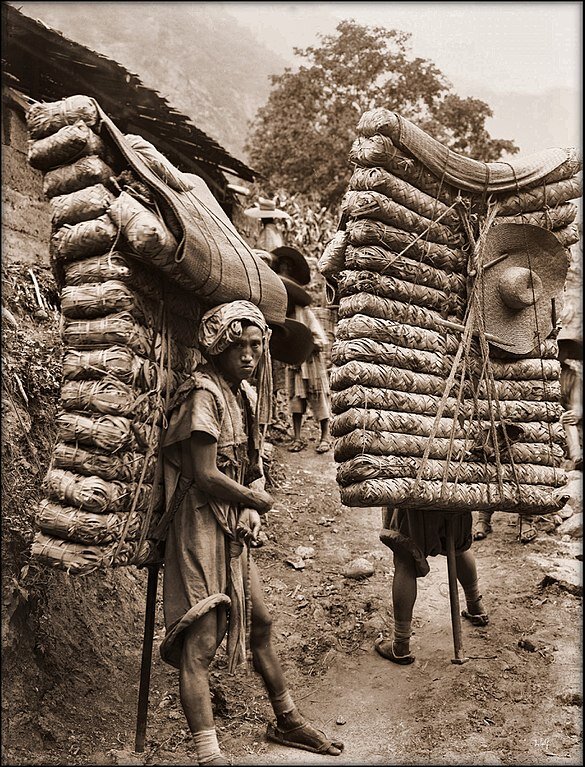Ancient Tea Horse Road
Men laden with 'Brick Tea' for Thibet (Tibet) in 1908 by photographer Ernest H. Wilson creative commons license
I think one of the coolest things about Pu'er tea is that it is a Chinese tea that is steeped in such a unique adventure and travel history.
Exploring the Ancient Tea Horse Road 茶马古道(cha ma gu dao) or Gyalam in Tibetan a now extinct but over 1000 year old trading route, we will illuminate the exciting adventure and travel elements of Pu'er tea’s long history.
To be more specific a 2,250 km long trading route that winds along the treacherous mountain passes in Southwest China,on the Tibetan plateau, and near the Himalayas connecting Chinese pu'er tea from Yunnan, one of China’s first tea producing regions in the southwest, to Tibet after a three month long journey where tea was traded for Tibetan horses.
Tibetans Loved Chinese Tea and The Chinese Needed Tibetan Horses
First introduced to the nobility and elite of Tibet, tea quickly became a staple of the Tibetan diet in all sectors of society. Trade between Tibet and China began to flourish when the Chinese military discovered they desperately needed horses to match nomadic forces. Tibetans highly valued tea which according to the BBC, made
“raw tea at the time worth more than porcelain or silk. The exchange? A single horse for 60kg of tea.”
According to National Geographic:
“By the 13th century China was trading millions of pounds of tea for some 25,000 horses a year. …bartering tea for horses continued through the Ming dynasty (1368-1644) and into the middle of the Qing dynasty (1645-1912).
When China’s need for horses began to wane in the 18th century, tea was traded for other goods: hides from the high plains, wool, gold, and silver, and, most important, traditional Chinese medicines that thrived only in Tibet.”
AKA: The Southern Silk Road
Considering the thriving commercial and cultural trade that occurred along the Ancient Tea Horse Road is also sometimes referred to as the Southern Silk Road. As with all trade routes, the most valuable interactions are the exchange of ideas from person to person across cultures.
Often the people engaging in this exchange were tea porters or muleteers who would carry more than their own weight in tea on their back (see photo above)!
Since I’m always interested in politics, power, and how they are often shaped by everyday consumer treasures like tea, I’m fascinated with this tidbit from National Geographic about how tea shaped ancient power structures:
“Just as China’s imperial government used to regulate the tea trade in Sichuan, so monasteries influenced the trade in theocratic Tibet. The Tea Horse Road, known to Tibetans as the Gyalam, connected the important monasteries. Over the centuries, power struggles in Tibet and China changed the Gyalam’s route.”
Ancient Tea Horse Road at Chenyao Cliff in 2017 creative commons license
For Further Exploration
Adventure, exploration, travel, trade, political intrigue, prized tea…what more could you ask for?
When you drink your Pu'er Tea you can let your imagination wander around this adventurous trade route and soak up the history of the Ancient Tea Horse Road with each sip.
For more in depth reading check-out:
National Geographic’s Feature on the Ancient Tea Horse Road
The Silk Road Foundation’s piece on the Ancient Tea Horse Road
BBC’s photo essay of the Ancient Tea Horse Road






